On our second day in China, we drove about an hour and a half out of Beijing to visit a section of the Great Wall. In several places near Beijing, the wall has been rebuilt and has opened more or less as a tourist attraction. We were lucky to visit the Mutianyu section that is farther from the city—and consequently less crowded—on a sunny, smog-free day. I think we both approached the wall in wide-eyed amazement, since the section we were visiting was built so high up on a mountain that we had to ride a cable car up to reach it. Once we were up on the wall, we could see how it crisscrossed over the mountains, interspersed every little bit with watchtowers, and that it was wide enough for at least a car to drive over it. It was a beautiful day, and we really enjoyed hiking for a while, huffing and puffing as we worked our way up the steps for different views. After a couple of hours we took the toboggan (that’s right!) back down the mountain. It was basically like riding down a mile-long slide on a sled with wheels (and a handbrake, fortunately).
Three days later, about an hour or so outside of the “small” city of Datong, we visited another portion of the Great Wall. Before leaving home, we happened to read an article by Nicholas Kristof about places to go in 2012 to understand the world, and without it I’m pretty sure we never would have heard of Datong. Although it’s about the size of metropolitan Minneapolis, in China Datong is considered a small city. The only part about it that seemed small to us was the airport—it had just one gate. Clearly most people in Datong aren’t flying. That’s when we started to realize that there is a lot more to China than we had caught a glimpse of in Beijing. During our travels we kept hearing China referred to as a developing country. “Developing country?” I thought. “Hmm. Not quite like Ethiopia, though, right?” I wondered to myself. Well maybe not quite. But as we learned a hint of in and around Datong, China has a lot more layers than we initially realized. Beijing is a huge, modern city that in many ways feels very familiar. The city of Datong seemed big, for sure, with apartment blocks seemingly stretching miles in every direction, but the feeling about it was far less familiar.
Overall, Datong was an interesting and somewhat bewildering place. Its original name, when it was founded in 200 BC, was Pingcheng, but in 1048 AD it was renamed as Datong—meaning “Peaceful Place”—in the hopes that the name change would stop the Mongolians from continually attacking it (that didn’t work, as we learned).
These days, the city is still not very peaceful, since there is construction going on pretty much everywhere. The old city was being razed so that it could be newly constructed from the ground up to look old. Ancient-looking city walls had been recreated on two sides of the city and were currently under construction on the other two sides. The old brick homes in the center of town were being demolished after residents were “encouraged” to relocate to new apartment buildings outside of the soon-to-be walled part of the city.
Temples had been rebuilt to look old, a mosque had been moved to a more “convenient” location, and the owners of a hotel building that had been deemed too tall had agreed to chop the top half off of the building so as to comply with the new zoning requirements.
All of the construction gave what should have been the old section of Datong almost a Disneyland quality—it felt like the old city was being reconstructed as a tourist amusement park, with everything built to look old but most of it being brand new. It seemed so strange to us, being from a place that in comparison has such a short history and in recompense reveres anything old.
When we headed out of Datong to a nearby section of the Great Wall, we finally could really feel that we were in a developing country. We stopped in a small village about seven or eight miles from the border of Inner Mongolia, and it was fascinating. Here was the China that I had been waiting to see. The villagers used outdoor wells with hand pumps to get water—just like the ones I had seen in Ethiopia—although here each household had its own well right in the yard. In the small green spaces around their wells most families were growing sunflowers (for their seeds) and other crops. There was electricity, and also a large signboard explaining in comic-book-style pictures and words the one-child policy, with a scary picture towards the end of a woman who had violated the policy being carted off to jail. The village seemed to have maybe one hundred or so tightly clustered homes, many of which were apparently built with bricks that had been pilfered from the Great Wall surrounding the city. According to our guidebook, Mao Zedong encouraged this practice.
While visiting the (non-reconstructed) wall here, we learned that when it was first built, it was really just a linkage between the individual walls that surrounded and protected cities across China. Over time the wall was extended and fortified into what we think of today. But in this village, which was apparently a fortress town on the border centuries ago, we could see the wall in its original form, built from mud bricks, with an inner wall surrounding the town and then the Great Wall extending from it as far as we could see. The gate to the inner wall, rebuilt and strengthened during the Ming Dynasty about 500 or so years ago, looked like it was at least thirty feet thick. It made me wonder what the village was like in its heyday hundreds of years ago, as compared to the rural farming community that it is today. We walked the short walk from one end of the town to the other and asked our guide questions about the villagers’ way of life. Looking through the window of one of the homes (with the villagers looking right back and apparently commenting on our strangely pale skin), our guide pointed out a kitchen table/common space/bed that is typical to rural homes in the area. It was essentially a large wooden tabletop covered in plastic that is used as the family’s seating area and surface for eating meals during the daytime and place to sleep during the night. It looked very hard and definitely no more comfortable than sleeping on the floor.
Seeing this village was definitely my favorite part of our trip to China—it felt like we got to see real life there, as opposed to the uniform city life in Beijing and Shanghai, where we almost could have been in any large and modern city in the world. It sparked our curiosity and made us realize that there’s a lot more to China than what we usually hear about at home. Thanks, Nicholas Kristof!
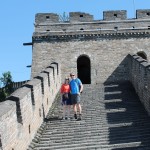
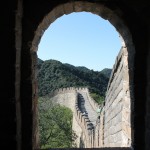
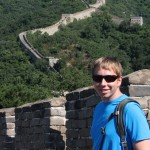
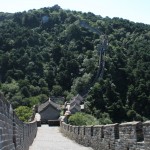
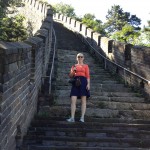
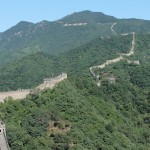
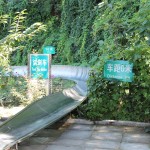

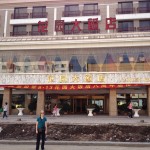
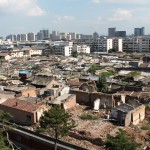
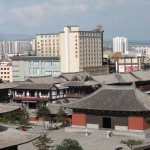
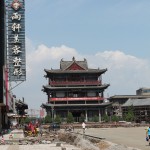
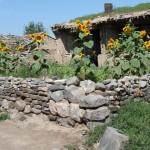

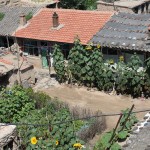
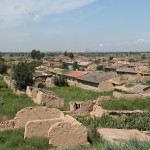
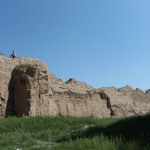
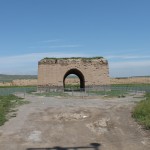
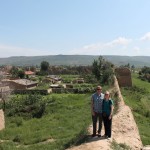
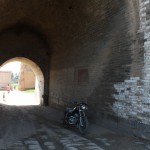
Wow. That toboggan ride must have been a trip!
Shells and JohnIII–I rode the toboggan when Anne and I were at the Beijing Olympics four years ago. It was great fun. I think Annie may have ridden it as well, but I can’t remember. Watching the Democratic Convention now–u r not missing much!!! Also, Austin has been over 100 the past three days. Hopefully, wherever u r now is cooler than Austin. It sounds like u r still enjoying your trip and many new adventures. The security gate in Tien Square must be knew as I always just walked through it on past trips to Beijing. The food u r having sounds wonderful and ur descriptions are great. Have fun, Dad.
Shelley and John, I was very fascinated by the concept of a table/common space/ bed in rural homes in China. Even the “Little House on the Prairie” had more. Love to you both, Arlene